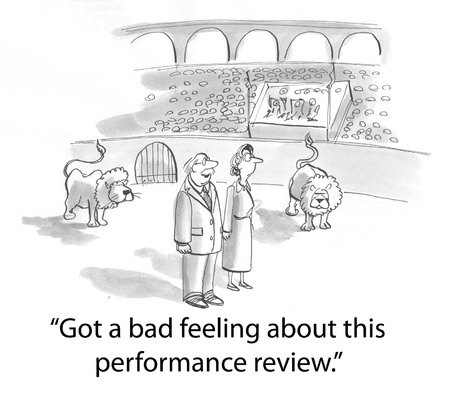Managing Employee Performance – Assessing Performance Part 3

This blog is part of a series focusing on the topic of “Managing Employee Performance”. Managing employee performance in the workplace is comprised of all of the interactions and activities that take place between an employer and an employee that result in the achievement of goals and expectations.
Previous blogs in this series answered questions about how we assess performance and how we can share those assessments by “landing” the message. This blog will offer further insights into how to be effective at landing the message.
Set the Theme of the Message of the Performance Conversation
When a manager has determined that they want to enter into a performance conversation with an employee, they must first decide the theme of the message that they want to leave with the employee. It could be argued that performance feedback can be divided into two categories.
- The feedback is either designed to reinforce the employee’s behaviour – communicating to the employee that they are on target with respect to meeting expectations,
- or it is designed to communicate to the employee that they are not on target and corrections need to be made to the employee’s behaviour.
Reinforcing behaviour or correcting behaviour are the two key purposes to performance feedback. So, when a manager is about to engage in a performance conversation with an employee, they need to be clear on the purpose of the conversation. Is the purpose to reinforce a positive behaviour that is meeting expectations? Or, is the purpose to correct an inappropriate behaviour that is not meeting expectations. In order to be effective at “landing” a message, the first step is to determine what message you want to land.
Maximize the Effectiveness of the Performance Conversation
Once the manager has determined the purpose of the message, there are two other guidelines that they should follow in order to maximize the effectiveness of the performance conversation.
The first guideline is: Be Specific.
Given that we have established that the two purposes of performance feedback are to either reinforce behaviour or to correct behaviour, it follows that effective messaging must include specific information regarding what was done correctly or incorrectly. Start with the specific facts that are related to the message you are trying to land and connect those facts to the expectations that have been communicated. The facts that you share will either reinforce expectations you communicated or will demonstrate that a correction is needed in order to achieve the expectations.
The second guideline is: Focus on the Performance, not the Person.
An example of focusing on the person versus focusing on the performance is demonstrated by the following statement: “you have an attitude problem”. Using the term “attitude problem” focuses on the person as an individual as opposed to the behaviour they demonstrated that would lead to that judgment.
There are two reasons why the guideline of focusing on the performance not the person is important. The first reason is that using personal statements that are typically judgmental in nature, usually results in the person receiving the message tuning out because they are offended by a judgmental statement. When a person has tuned out, there is no way to land the message. The second reason for focusing on performance is that it provides employees with specific information with respect to what needs to change or what needs to continue.
So, rather than making a statement “you have an attitude problem”, a better choice would be to describe the behaviours that the person is demonstrating that lead you to believe that they have an attitude problem. This might include the words and language they choose, or their tone of voice and observable reactions to their tone of voice. Although, at times this may seem like a subtle difference, it is critically important to landing the message.
In summary, in addition to using the FEED approach when sharing feedback, it is important to: establish the message that you want to land; be specific; and focus on the performance of the person.
The next blogs in this series will offer further insights into the importance of creating a motivating environment in order to help an employee succeed as part of an effective program for managing employee performance.
As always, I welcome your feedback. You can connect with me via email or telephone or leave a comment right here on the site.
Until next time,
Dave
David Town, CHRL, is a facilitator and coach of leadership and management principles that enable individuals and organizations to build greater leadership competency, resulting in higher performance and higher employee engagement. David has a particular focus on effectively managing conversations involving confrontation or conflict. As well, he provides insights and assessment strategies for integrating character competencies into leadership skills resulting in increased trust and reduced risk for leaders. David is a member of the International Coaching Federation and is President of Your Leadership Matters Inc.






Leave a Reply
Want to join the discussion?Feel free to contribute!